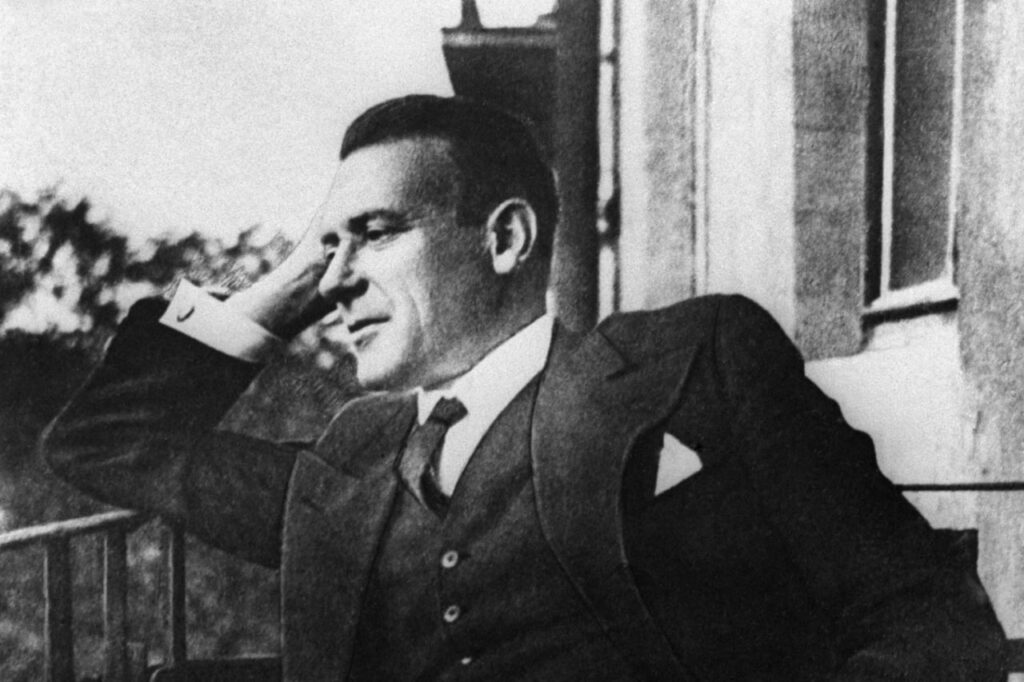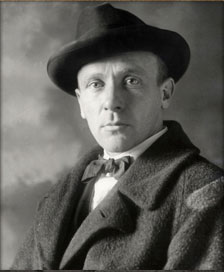The Master and Margarita, Bulgakov Mikhail

Contents
Introduction
A Note on the Text
Book One
Chapter 1, Never Talk with Strangers
Chapter 2, Pontius Pilate
Chapter 3, The Seventh Proof
Chapter 4, The Chase
Chapter 5, There were Doings at Griboedov’s
Chapter 6, Schizophrenia, as was Said
Chapter 7, A Naughty Apartment
Chapter 8, The Combat between the Professor and the Poet
Chapter 9, Koroviev’s Stunts
Chapter 10, News From Yalta
Chapter 11, Ivan Splits in Two
Chapter 12, Black Magic and Its Exposure
Chapter 13, The Hero Enters
Chapter 14, Glory to the Cock!
Chapter 15, Nikanor Ivanovich’s Dream
Chapter 16, The Execution
Chapter 17, An Unquiet Day
Chapter 18, Hapless Visitors
Book Two
Chapter 19, Margarita
Chapter 20, Azazello’s Cream
Chapter 21, Flight
Chapter 22, By Candlelight
Chapter 23, The Great Ball at Satan’s
Chapter 24, The Extraction of the Master
Chapter 25, How the Procurator Tried to Save Judas of Kiriath
Chapter 26, The Burial
Chapter 27, The End of Apartment No. 50
Chapter 28, The Last Adventures of Koroviev and Behemoth
Chapter 29, The Fate of the Master and Margarita is Decided
Chapter 30, It’s Time! It’s Time!
Chapter 31, On Sparrow Hills
Chapter 32, Forgiveness and Eternal Refuge
Epilogue
Notes
Introduction
Mikhail Bulgakov worked on this luminous book throughout one of the darkest decades of the century. His last revisions were dictated to his wife a few weeks before his death in 1940 at the age of forty-nine. For him, there was never any question of publishing the novel. The mere existence of the manuscript, had it come to the knowledge of Stalin’s police, would almost certainly have led to the permanent disappearance of its author. Yet the book was of great importance to him, and he clearly believed that a time would come when it could be published.
Another twenty-six years had to pass before events bore out that belief and The Master and Margarita, by what seems a surprising oversight in Soviet literary politics, finally appeared in print. The effect was electrifying.
The monthly magazine Moskva, otherwise a rather cautious and quiet publication, carried the first part of The Master and Margarita in its November 1966 issue. The 150,000 copies sold out within hours. In the weeks that followed, group readings were held, people meeting each other would quote and compare favourite passages, there was talk of little else. Certain sentences from the novel immediately became proverbial. The very language of the novel was a contradiction of everything wooden, official, imposed. It was a joy to speak.
When the second part appeared in the January 1967 issue of Moskva, it was greeted with the same enthusiasm. Yet this was not the excitement caused by the emergence of a new writer, as when Aleksandr Solzhenitsyn’s One Day in the Life of Ivan Denisovich appeared in the magazine Novy Mir in 1962. Bulgakov was neither unknown nor forgotten. His plays had begun to be revived in theatres during the late fifties and were published in 1962. His superb Life of Monsieur de Molière came out in that same year. His early stories were reprinted. Then, in 1965, came the Theatrical Novel, based on his years of experience with Stanislavsky’s renowned Moscow Art Theatre. And finally in 1966 a volume of Selected Prose was published, containing the complete text of Bulgakov’s first novel, The White Guard, written in the twenties and dealing with the nearly contemporary events of the Russian civil war in his native Kiev and the Ukraine, a book which in its clear-sighted portrayal of human courage and weakness ranks among the truest depictions of war in all of literature.
Bulgakov was known well enough, then. But, outside a very small group, the existence of The Master and Margarita was completely unsuspected. That certainly accounts for some of the amazement caused by its publication. It was thought that virtually all of Bulgakov had found its way into print. And here was not some minor literary remains but a major novel, the author’s crowning work. Then there were the qualities of the novel itself — its formal originality, its devastating satire of Soviet life, and of Soviet literary life in particular, its ‘theatrical’ rendering of the Great Terror of the thirties, the audacity of its portrayal of Jesus Christ and Pontius Pilate, not to mention Satan.
But, above all, the novel breathed an air of freedom, artistic and spiritual, which had become rare indeed, not only in Soviet Russia. We sense it in the special tone of Bulgakov’s writing, a combination of laughter (satire, caricature, buffoonery) and the most unguarded vulnerability. Two aphorisms detachable from the novel may suggest something of the complex nature of this freedom and how it may have struck the novel’s first readers.
One is the much-quoted ’Manuscripts don’t burn‘, which seems to express an absolute trust in the triumph of poetry, imagination, the free word, over terror and oppression, and could thus become a watchword of the intelligentsia. The publication of The Master and Margarita was taken as a proof of the assertion. In fact, during a moment of fear early in his work on the novel, Bulgakov did burn what he had written. And yet, as we see, it refused to stay burned. This moment of fear, however, brings me to the second aphorism — ’Cowardice is the most terrible of vices’ — which is repeated with slight variations several times in the novel.
More penetrating than the defiant ‘Manuscripts don’t burn’, this word touched the inner experience of generations of Russians. To portray that experience with such candour required another sort of freedom and a love for something more than ‘culture’. Gratitude for such perfect expression of this other, deeper freedom must surely have been part of the enthusiastic response of readers to the novel’s first appearance.
And then there was the sheer unlikeliness of its publication. By 1966 the ‘thaw’ that had followed Stalin’s death was over and a new freeze was coming. The hopes awakened by the publication of One Day in the Life of Ivan Denisovich, the first public acknowledgement of the existence of the Gulag, had been disappointed. In 1964 came the notorious trial of the poet Joseph Brodsky, and a year later the trial of the writers Andrei Sinyavsky and Yuli Daniel, both sentenced to terms in that same Gulag. Solzhenitsyn saw a new Stalinization approaching, made worse by the terrible sense of repetition, stagnation and helplessness. Such was the monotonously grim atmosphere of the Brezhnev era. And in the midst of it there suddenly burst The Master and Margarita, not only an anomaly but an impossibility, a sort of cosmic error, evidence of some hidden but fatal crack in the system of Soviet power. People kept asking, how could they have let it happen?
Bulgakov began work on the first version of the novel early in 1929, or possibly at the end of 1928. It was abandoned, taken up again, burned, resurrected, recast and revised many times. It accompanied Bulgakov through the period of greatest suffering for his people — the period of forced collectivization and the first five-year plan, which decimated Russia’s peasantry and destroyed her agriculture, the period of expansion of the system of ‘corrective labour camps’, of the penetration of the secret police into all areas of life, of the liquidation of the intelligentsia, of vast party purges and the Moscow ‘show trials’.
In literature the same struggle went on in miniature, and with the same results. Bulgakov was not arrested, but by 1930 he found himself so far excluded that he could no longer publish or produce his work. In an extraordinarily forthright letter to the central government, he asked for permission to emigrate, since the hostility of the literary powers made it impossible for him to live.
If emigration was not permitted, ‘and if I am condemned to keep silent in the Soviet Union for the rest of my days, then I ask the Soviet government to give me a job in my speciality and assign me to a theatre as a titular director.’ Stalin himself answered this letter by telephone on 17 April, and shortly afterwards the Moscow Art Theatre hired Bulgakov as an assistant director and literary consultant. However, during the thirties only his stage adaptations of Gogol’s Dead Souls and Cervantes’ Don Quixote were granted a normal run.
His own plays either were not staged at all or were quickly withdrawn, and his Life of Monsieur de Molière, written in 1932-3 for the collection Lives of Illustrious Men, was rejected by the publisher. These circumstances are everywhere present in The Master and Margarita, which was in part Bulgakov’s challenge to the rule of terror in literature. The successive stages of his work on the novel, his changing evaluations of the nature of the book and its characters, reflect events in his life and his deepening grasp of what was at stake in the struggle. I will briefly sketch what the study of his archives has made known of this process.
The novel in its definitive version is composed of two distinct but interwoven parts, one set in contemporary Moscow, the other in ancient Jerusalem (called Yershalaim). Its central characters are Woland (Satan) and his retinue, the poet Ivan Homeless, Pontius Pilate, an unnamed writer known as ‘the master’, and Margarita. The Pilate story is condensed into four Chapters and focused on four or five large-scale figures. The Moscow story includes a whole array of minor characters.
The Pilate story, which passes through a succession of narrators, finally joins the Moscow story at the end, when the fates of Pilate and the master are simultaneously decided. The earliest version, narrated by a first-person ‘chronicler’ and entitled The Engineer’s Hoof, was written in the first few months of 1929. It contained no trace of Margarita and only a faint hint of the master in a
